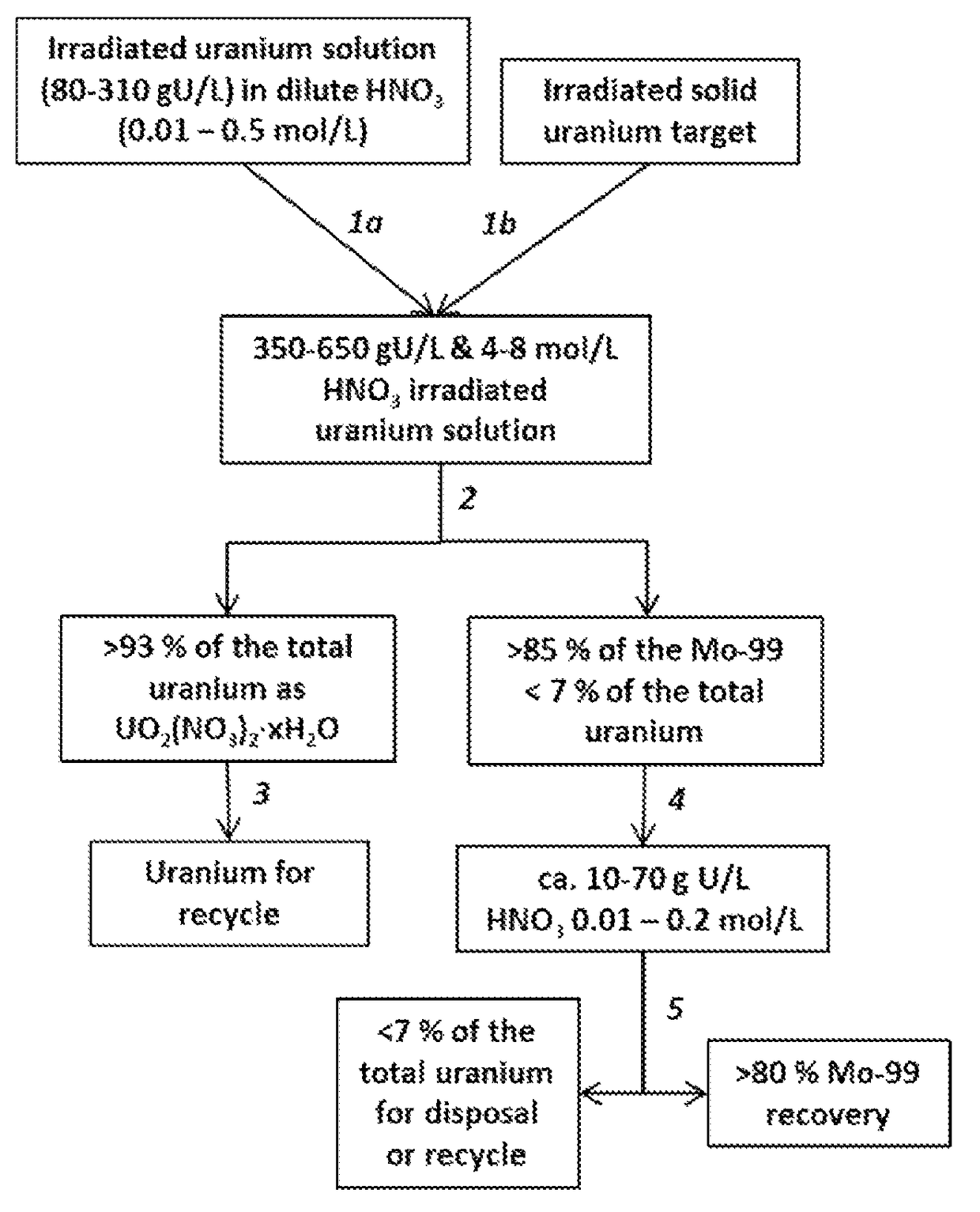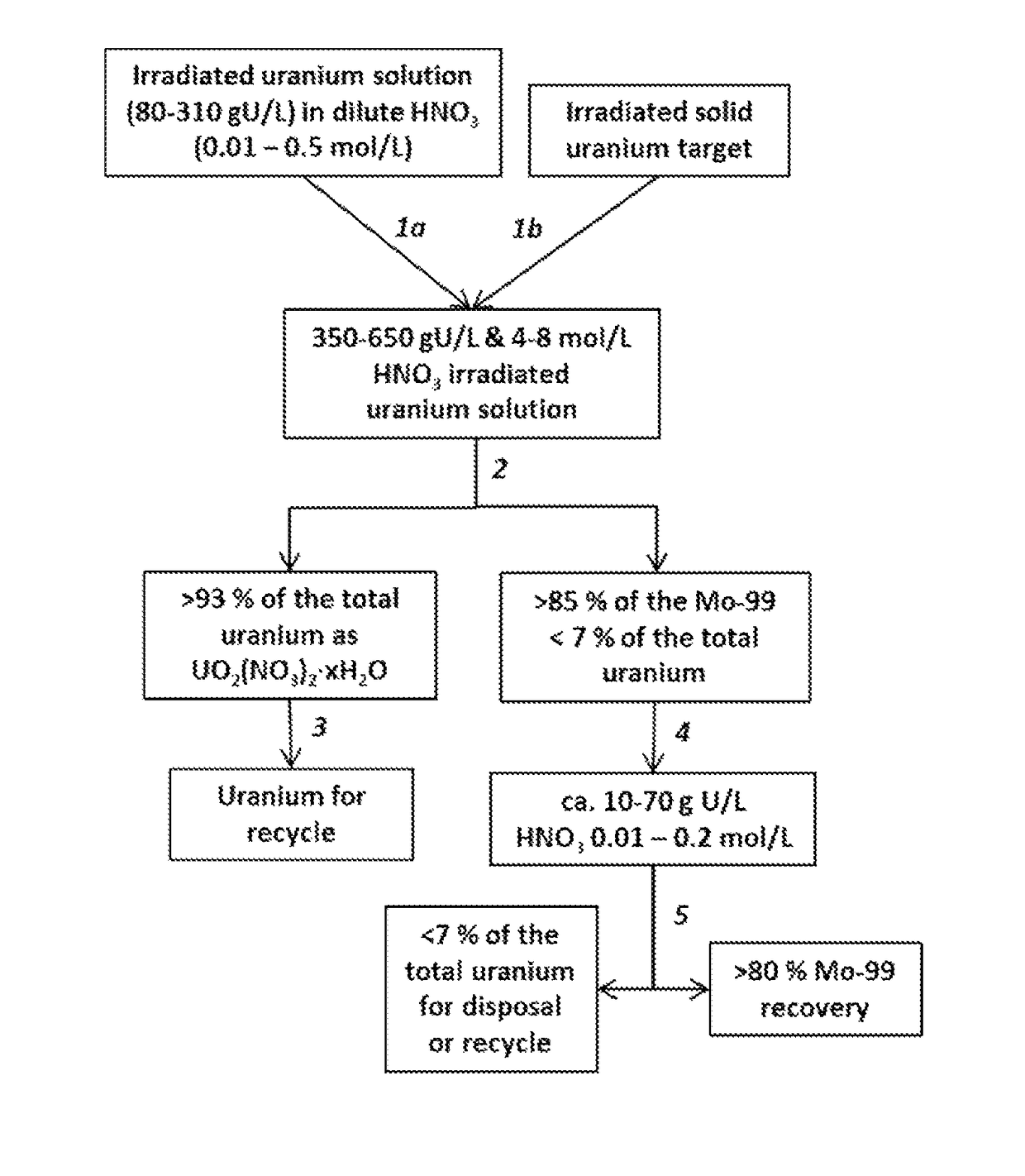Recovering and recycling uranium used for production of molybdenum-99
a technology of uranium and molybdenum, which is applied in the field of production of molybdenum99 and to recycling uranium, can solve the problems of disrupting the supply of mo-99 to the u.s. and to the rest of the world
- Summary
- Abstract
- Description
- Claims
- Application Information
AI Technical Summary
Benefits of technology
Problems solved by technology
Method used
Image
Examples
Embodiment Construction
[0017]An embodiment process relates to recovery of uranium that has been used for the production of Mo-99 generated from the fission of U-235. Mo-99 undergoes radioactive decay to Tc-99m, the most widely used radioisotope in nuclear medicine. Recovery of the uranium allows for continued use of the parent radioisotope (U-235) to produce Mo-99, which can decay to generate Tc-99m. Recovery of uranium also minimizes waste by allowing for continued use of the same uranium for the continued production of Mo-99.
[0018]An embodiment process for recycling uranium that has been used for the production of Mo-99 includes providing an aqueous solution comprising uranyl nitrate and nitric acid, irradiating the solution to produce soluble fission products that include Mo-99. Thereafter adjusting the nitric acid and uranium concentration to concentrations suitable for inducing the formation of crystals of uranyl nitrate hydrates, and a supernatant (i.e., the liquid phase that remains). The crystals ...
PUM
 Login to View More
Login to View More Abstract
Description
Claims
Application Information
 Login to View More
Login to View More - R&D
- Intellectual Property
- Life Sciences
- Materials
- Tech Scout
- Unparalleled Data Quality
- Higher Quality Content
- 60% Fewer Hallucinations
Browse by: Latest US Patents, China's latest patents, Technical Efficacy Thesaurus, Application Domain, Technology Topic, Popular Technical Reports.
© 2025 PatSnap. All rights reserved.Legal|Privacy policy|Modern Slavery Act Transparency Statement|Sitemap|About US| Contact US: help@patsnap.com


